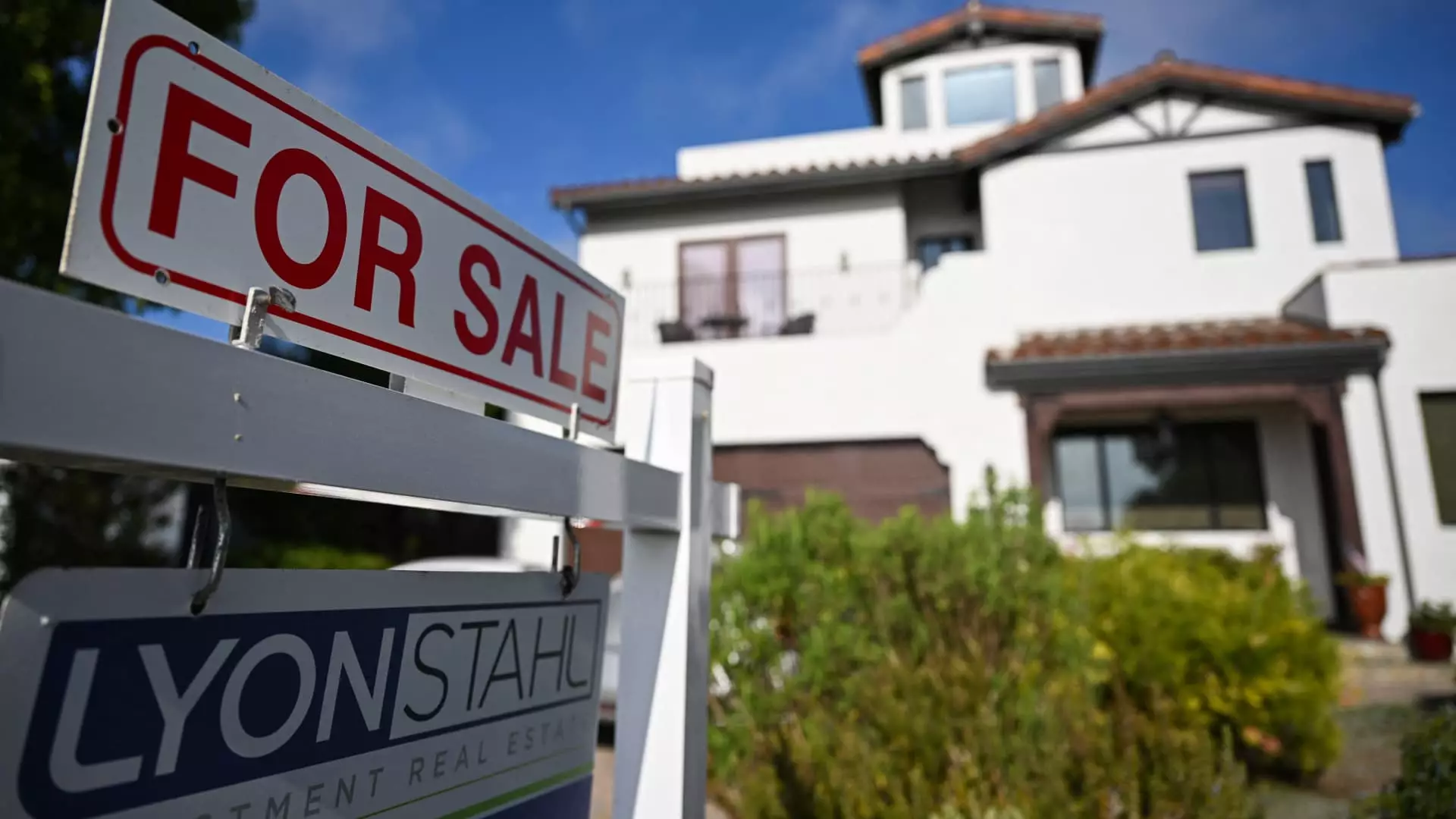The economic landscape can shift dramatically overnight based on decisions made in the political arena, and this was recently exemplified with the Trump administration’s abrupt tariff announcement. Following this declaration, mortgage rates experienced a significant drop, with average rates on 30-year fixed loans descending 12 basis points to 6.63%. This reflects the lowest rates seen since October, stirring cautious optimism in an otherwise turbulent market.
Market volatility often leads investors to alternate refuge; in this case, a massive stock sell-off drove a surge toward safer bond investments. When bond yields decline, mortgage rates tend to follow suit, establishing a tenuous connection between fluctuating financial markets and housing affordability. The early reactions to policy changes underscore the sensitive interdependence of economic variables. As Matthew Graham of Mortgage News Daily pointed out, while uncertainty looms, clear signals indicate a business community bracing for the implications of shifting global trade norms.
Impact on Home Affordability
Yet, the drop in mortgage rates comes at a paradoxical moment. While this situation might typically signify a boost for homebuyers, the reality presents a harsh contradiction. The housing market remains stricken by exorbitant pricing, evidenced by a record average monthly payment hitting $2,802 recently—a clear sign that conservation of income does not translate to accessibility in housing. Sale prices surged by 3.4% year-over-year, solidifying a narrative that hindered many aspiring homeowners from entering the market.
Compounding this issue, approximately 70% of households are priced out of affording a $400,000 home, as reported by the National Association of Home Builders. The figures provide a stark commentary on income disparities in contemporary America. With the prediction of a median home price around $460,000 by 2025, dishearteningly, experts estimate that over 52 million households will find themselves constrained to properties valued at $200,000 or lower.
Supply Chain Issues in Real Estate
Although there is a notable uptick in housing inventory, the skirt of affordability remains tight. The new listings have surged by 10% as the spring season has progressed—encouraging statistics on the surface. However, much of this new inventory is not tailored to match the demands of lower-income households. The chronic underbuilding since the Great Recession has cast a long shadow, with inventory still below historical levels.
Redfin agents note a growing sentiment among sellers who are eager to capitalize on their investments, believing we’re approaching the market peak. This opinion, however, may inadvertently trap many would-be buyers in a stale cycle of overinflated offerings. Sellers are influenced by shifting employment paradigms, pushing some to relocate closer to urban centers or navigate uncertain job landscapes due to government job fears.
A Glut of Choices—But for Whom?
The apparent increase in active listings holds a misleading promise. Listings are sitting longer on the market, and an uptick in price reductions indicates a disconnect between demand and supply. The softening market has been particularly pronounced in metropolitan areas like Jacksonville and Miami, where pending sales have plummeted. These declines not only highlight a cooling market but also an evolving demographic narrative, as pandemic-driven migrations reverse themselves in search of stability.
Danielle Hale, chief economist for Realtor.com, articulated this complex scenario: “The high cost of buying coupled with growing economic concerns suggest a sluggish response from buyers in early spring.” The emerging picture is not one of recovery; instead, it reflects a market fraying at the edges, where potential homeowners are left to choose between dwindling options and rising costs.
In a nation where homeownership is often regarded as the bulwark of economic progress and personal equity, the startling reality of our current trajectory sends troubling signals. This imbalance necessitates serious conversation around housing policy and economic responsibility, emphasizing a need for systemic reform. The question remains: will policymakers step up to ensure housing is a viable option for the many, rather than a privilege for the few?

